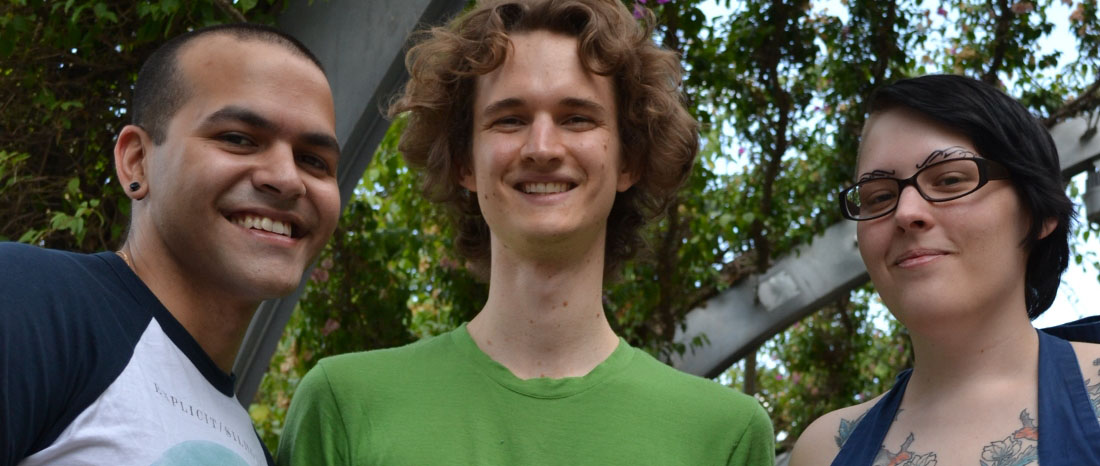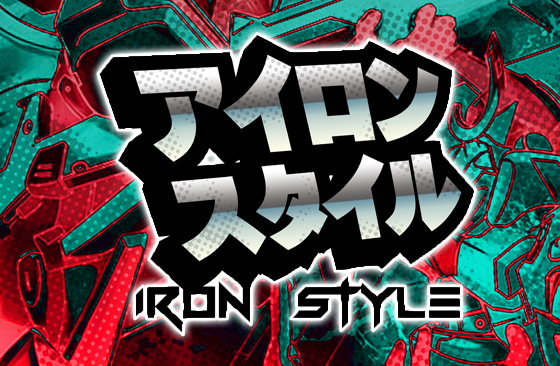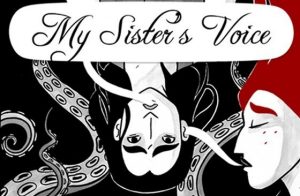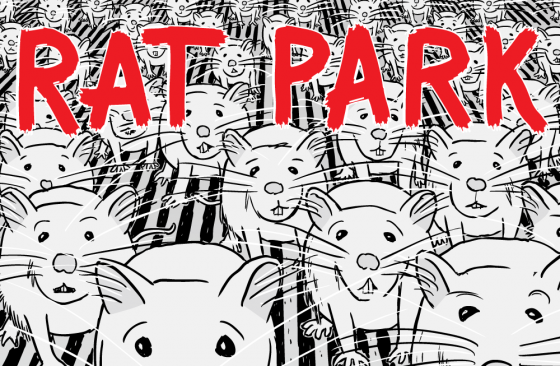Crowdfunding comics: Brisbane trio drawing support from fans

(Media release to support the crowdfunding campaigns for Rat Park, Iron Style and My Sister’s Voice).
Three Brisbane cartoonists are using crowdfunding as a way of financing their comic art projects.
Throughout October 2012, Brisbane cartoonists Zac Smith-Cameron, Alexis Sugden and Stuart McMillen will be using crowdfunding to finance their comic art from web user investors.
With not a caped superhero to be seen, the three projects showcase the diversity of Brisbane comic art, and the possibilities which the comics medium offers in 2012.
The projects range from the Ashcan Comics manga compilation Iron Style, the graphic novel fiction of My Sister’s Voice by Alexis Sugden, and the non-fiction Rat Park by Stuart McMillen about the science of drug addiction. Despite stylistic and thematic differences, the three cartoonists are united by their Brisbane home base and their use of the crowdfunding model.
“It’s all-or-nothing”, Stuart McMillen said about using crowdfunding. “We each have set campaign targets and deadlines. If we don’t meet our targets within the time period, the projects don’t succeed. No money changes hands, and the comics do not get made.”
McMillen has set a target of $6,000 to create Rat Park from scratch, while Ashcan Comics is seeking $5,500 to reimburse the Iron Style compilation writers and artists for their hard work. Sugden’s goal is $1,000 to print and distribute the already-completed My Sister’s Voice.
“We are encouraging fans to invest in our projects by offering a range of reward items”, said Zac Smith-Cameron. “Fans who contribute smaller amounts get rewards such as digital copies of our comics. However, we also offer other merchandise packs including books, posters and t-shirts. We will even draw custom artwork for fanatical supporters with large pledges!”
“Crowdfunding lets fans directly support the artistic projects which interest them”, said Alexis Sugden. “It is great that readers can support my art directly, and that the expenses like printing are covered upfront.”
Potential investors are advised to get in quick with their pledges: Rat Park and My Sister’s Voice have campaign deadlines in early November, while Iron Style‘s campaign closes in January 2013.
Information about the three projects:
- Iron Style: a compilation of manga stories by publisher Ashcan Comics.
Originally a Japanese art form, manga has been adopted and adapted by Australian writers and artists.
Iron Style is a showcase of the best of Australian Manga in 2012.
Zac Smith-Cameron is the co-founder of Ashcan Comic Collective, based in Brisbane. - Crowdfunding: pozible.com/ironstyle Main website: ashcan.com.au
- My Sister’s Voice: a fiction comic by Alexis Sugden which follows the lives of three women.
When Polina goes missing, her sister Anna won’t rest until she is found.
With her mother in tow and her grandmother’s ghost guiding the way, Anna spends more than a year at sea searching for her sister. - Crowdfunding: pozible.com/mysistersvoice Blog: alexisdraws.blogspot.com
- Rat Park: a non-fiction comic by Stuart McMillen about research into drug addiction.
McMillen uses the medium of comics to explore scientific, environmental and social issues.
Rat Park is about 1970s animal experiments of Canadian psychologist Bruce Alexander.
The infamous ‘Rat Park’ studies challenge our assumptions about addiction. - Crowdfunding: pozible.com/ratpark Main website: stuartmcmillen.com
Zac, Alexis and Stuart are available for media interviews, photo opportunities, podcasts and the like. Please contact Stuart McMillen.
Brisbane cartoonists Zac Smith-Cameron, Stuart McMillen and Alexis Sugden
Iron Style by Ashcan Comics teaser image
My Sister’s Voice by Alexis Sugden teaser image
Rat Park by Stuart McMillen teaser image












Comments
TK
This looks like a fantastic project. A couple of suggestions:1) Please get your draft reviewed by a scientist working in this area in order to check for technical accuracy. 2) Please cover the recent work on "environmental enrichment" and drug addiction (if you can't access journal articles, just email one of the authors). This is a hot area of research. See, for example, and maybe ask the authors of this study (free full text, Solinas et al 2008 PNAS):http://www.ncbi.nlm.nih.gov/pubmed/18955698 3) Please focus on scientific facts and the future rather than complaining that Rat Park was suppressed. It is always difficult to get research grants. It is very difficult to publish in Nature or Science -- no shame in not being accepted in there. The Rat Park study was published in Psychopharmacology, a completely respectable specialty journal.4) If you are talking with scientists, it can be easy to get lost in the technical details (neurobiological mechanisms? specific conditions? works for all drugs?) Try to stick to the main point: Prohibitionists have argued that "drugs" are inherently "addictive", pointing to use by laboratory animals as proof, but in these studies the animals are kept alone in tiny cages, and animals kept in more stimulating and social environments are much less interested in using cocaine, heroin, sugar, other addictive substances. By analogy, problematic drug use in humans is often a symptom of social and emotional stress -- stigmatizing and harassing drug users is thus cruel and counterproductive.5) There are so many directions to explore regarding humans. One thing you might mention: Giving homeless alcoholics a place where they can live, with dignity as an adult with few "rules" (OK to drink alcohol if they want), saves money on healthcare and actually reduces alcohol use.http://www.scientificamerican.com/article.cfm?id=homeless-project-residents-drink-less 6) Another possible thing to mention: The "myth of the Chinese opium plague" is central to the drug prohibition narrative, which views drug use as a contagious disease that anyone could "catch" by having access to drugs or by associating with a drug user (hence sale of drugs must be banned -- ignoring that this creates a dangerous black market -- and drug users must be "quarantined" away from society -- see the far-out but influential views of Nils Bejerot), rather than as a social/emotional problem affecting a minority of people. According to the UNODC 100 years of drug control report, use of all recreational drugs has increased under prohibition (cocaine and heroin were sold over the counter 100 year ago, with lower rates of use than today), except for opiates because of the apparent decrease in Chinese opium use. http://www.unodc.org/unodc/en/commissions/CND/one-hundred-years-of-drug-control.htmlBut actually most use of opium in China was for medical reasons (no aspirin, no antibiotics) or non-problematic social use. The extent of problematic opium use in 19th century China has been greatly exaggerated for various reasons by Christian missionaries, then Chinese Nationalists, then ambitious US drug prohibitionists. Use of opiates in China decreased more because of availability of new medicines and because of changing cultural fashions, rather than prohibition efforts. See the scholarly book Narcotic Culture, or read the summary:http://www.frankdikotter.com/publications/the_myth_of_opium.pdf